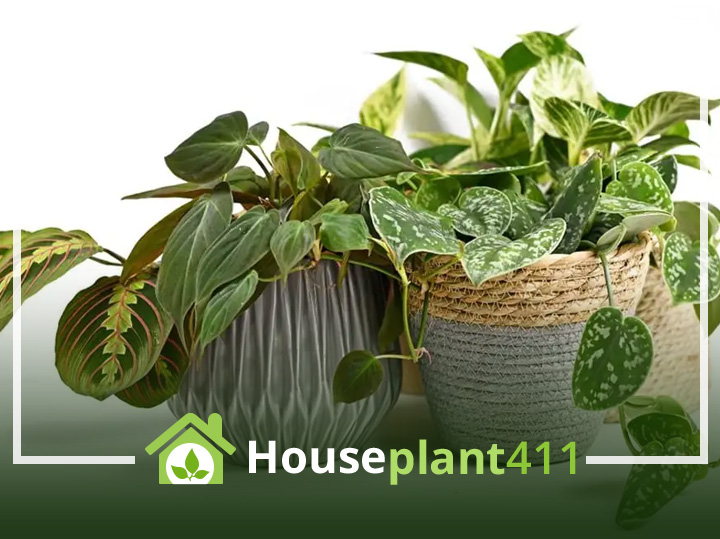Satin pothos plants are some of the prettiest plants you will ever have. There are many variations of pothos plants, and many house owners prefer these plants as they are easy to maintain and propagate. Satin pothos plants can be a little more tricky than other variations of the pothos plant. However, they also are worth it.
Plants are ubiquitous in households today. They bring vitality and life into any space they are kept. Thus, it is only natural for you to want to know how to take care of and propagate satin pothos plants for your home. Once you know the proper methods, you can house satin pothos plants all over your home. Many people even like gifting them to their loved ones and neighbors and propagation is a fantastic way to do this.
In the article today, we will tell you all about satin pothos plant propagation and how you can give yourself the best possible shot at it.
Reasons to Propagate a Satin Pothos Plant
People propagate satin pothos plants for a variety of reasons. One of the primary reasons may be that they want more satin pothos plants in their house. Many prefer these plants to others as they are aesthetically pleasing and easy to maintain. They are silver-speckled which makes them stand out when you display them in your home which is why so many people love having them around. Only some people want to spend money buying plants around their home when they can propagate satin pothos from cuttings or leaves. Others like having plants around and find learning how to propagate them a notable skill.
Another reason someone may want to propagate this plant is that plants make great gifts nowadays. Instead of buying a gift for your friend, you should give them something they can take care of. People often propagate satin pathos plants because it quickly gains dense foliage, and they want to cut it down. The cuttings can be well-spent and you can use them in propagation instead.
What is the Best Time to Propagate a Satin Pothos Plant?
If you’re thinking of propagating a satin pothos plant, it is notable to know that the best time to do so is in the spring or summer. These are the best times to grow any plant; the same principle applies to satin pothos plants. You may propagate this plant during fall if you live in a tropical or warmer climate. There are also times that you can propagate it in winter. However, there may be better results.
How to Propagate Satin Pothos Plants?
The most important thing for you to know as you propagate your satin pothos plants is that there are two primary methods: stem cuttings and propagation from the mother plant. However, you will require the tools to propagate before propagating the plant.
The tools are as follows:
- A clean, sharp scissor
- Two or more spare pots with drainage holes
- Soil and water
- Newspaper or plastic sheet
Propagating Satin Pothos Plants Using Stem Cuttings
The principal method of propagating satin pothos plants includes using stem cuttings. The following steps will allow you to propagate the proper plants using stem cuttings:
Step 1: Isolate a Healthy Stem
As you go about propagating a satin pothos plant, you want to give it the best opportunity for growth; thus, isolating a healthy stem is essential. There should be no sign of disease or pest infection on the cutting.
It would help if you wanted a cutting with several nodes and leaves. Nodes are the areas where roots grow. It’s best to opt for a section with aerial roots, allowing quicker propagation.
Step 2: Extricate the Stem
You want to use clean scissors or knives to make the stem cutting without any dirt or bacteria passing on to the cutting. Make sure that this cutting is not jagged and is clean cut. It’s best to include a cutting with two to three nodes and leaves on each side, so you have more control over your propagation.
Step 3: Fill Your Containers With Water
Use the time after making the cutting to fill your container with moderate-temperature water and place the cutting into it. You should ensure that the water is of moderate temperature so that the cutting has a better shot at survival, and you are likelier to have a more successful propagation.
It’s also better to use water that has been filtered or purified so that the levels of chemicals are reduced. A straightforward way of doing this is by keeping water out in the open for at least a day so that any chemicals present can evaporate.
Step 4: Add Plant Cuttings to the Water
Once you have prepared your containers, you can add the plant cuttings to the water, which begins the root growth on your stem cuttings. It’s best that you then place your glass or container in a place where these cuttings can receive indirect light or sunlight. If you place them directly in the sun, you could potentially burn the cuttings out, and propagation will not be fruitful. If you need more clarification about the level of brightness that your cuttings need, you can always use a light monitor to help guide you. There are also other ways to bring light into the equation. For example, LED growth lights will be your best friend if you propagate the cuttings in winter.
You will also have a much more successful propagation if you apply root growth hormone into the water. This helps increase root growth so that the cuttings are much more successful. A rooting gel can also help improve root cuttings and prepare them for the soil.
Step 5: Replace the Water Routinely
When propagating satin pothos plants using stem cuttings, you must replace the water in the glass for three to four days. This prevents water stagnation, bacteria, and infections from attacking the stem cuttings.
Step 6: Wait it Out
One of the simplest things you must do when propagating using this method is to let things be. The roots will take a while to grow fully, and they may not pop up in the pattern you would expect, which is why it is better to leave them alone instead of obsessing over them.
Step 7: Transfer to a Pot
Once it’s clear that the roots on your cutting have grown quite a bit, you can transfer these cuttings into soil. For successful propagation, you must use a potting mix of the highest quality so that drainage is easier. You need to carefully place your cuttings a few centimeters deep into the soil to ensure that you don’t damage the delicate roots.
Step 8: Take Proper Care
After propagation, you will be required to take extensive care of these cuttings as they require extra attention. But as they grow, you can sink back into taking care of these cuttings as you would with your other satin pothos plants.

Propagating Satin Pothos Plants Through the Mother Plant Division
If you have a Satin pothos plant that is exceptionally bushy and filled with foliage, you can divide it to create a whole new plant. This is the quickest method of satin pothos plant propagation available, but for this method, you will need a prior satin pothos plant.
Step 1: Remove the Plant from the Pot
It’s necessary that you would remove the plant so you can look at all of the roots and the different vines from the plant. Ensure that the extrication is gentle, so you don’t harm the plant.
Step 2: Identify Any Natural Divisions
Different offshoots and stems will become apparent if you’re looking for a segment to divide the plant into. The easiest way to identify these is by tracking the vine and slowly allowing the roots to loosen.
You want to clear off any excess potting wax near the roots so you can view the root system. Loosen the soil by combing your fingers through it. Don’t worry if you break or fall out, as this is normal.
Step 3: Segment Your Plant
Segment your plant so that you can divide them into sections and pull the vines apart easily. You may even want to cut up your plant a little so that it can be segmented easily; however, you want to ensure that each segment has the right number of roots so that propagation is successful.
Step 4: Put the Segment in a New Pot
Once you’re done making the segments, you can take the mother plant and put it back into its original pot. You can then place your new segment in a new pot with a fresh potting mix. You must know the level of growth that is available to your roots. If the roots are not fully grown, you should place your segment in water for a little while until the roots elongate. However, if the roots are long enough, you may place them straight into the potting mix after division.
It would help if you used fresh potting mix every time, as the older potting mix can sometimes have the best bacteria that may transfer into the newer plant.
Step 5: Resume Care
Once you have shifted your plant into a new pot, you want to give it some space for growth. However, after a couple of weeks of essential care, you can follow a routine like your mother’s satin pothos plant.

How to Take Care of Satin Pothos Plant Cuttings?
If you have cuttings from an older plant or have been gifted by a friend, then there are specific ways to take care of them before you propagate your plant. The first thing that you would have to do is place your cuttings in a bright spot. You want to ensure that the light is indirect but still bright. Bright light can cause cuttings to burn, resulting in unsuccessful propagation. Similarly, if the stem cuttings don’t get enough light, they may not be able to grow, and the cuttings will continue to grow weaker until they are completely unusable.
Before preparing the cuttings, you must replace the water regularly before potting. It would help if you kept the water level constant, so the cuttings don’t dry out.
How Long Do Satin Pothos Plants Take to Propagate?
The propagation is simple and quick. You can see significant growth within the first two weeks of planting. You must take the best care of your Saturn pothos plants during this time. After two weeks, you can ease up on your care routine and treat the propagated plants like regular satin pothos. After about two to three months, this plant can make stem cuttings for further propagation.
What are Some Problems That Can Occur During Propagation?
Propagation is extremely simple. However, you may encounter specific problems, such as a lack of root creation or the plants dying. It may also happen that the plant itself turns mushy and wilts.If it doesn’t receive the proper care, the leaves on the plants may be smaller than what you’re used to on typical plants, and they may even be yellow due to some problem that may have occurred during propagation. Thus, we recommend that you follow the steps listed above to the best of your ability and ensure no contamination when cutting your stems.
Concluding Thoughts
The propagation of satin pothos plants is exceptionally simple. However, you must follow the steps precociously so that your propagation results in more plants. Successful propagations have healthy Satin pothos plants at the end of them. If you need more clarification about how to propagate these plants, then you may get the help of an expert near you. However, the easiest way is to be as careful as possible when shifting the stem cuttings around.

